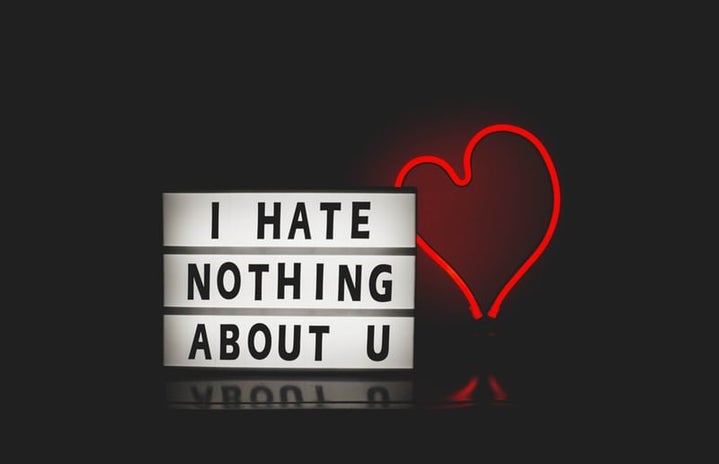“Wah lau eh! So much work got no time to lepak sia”
This is the language spoken by the 5.8 million dwellers of Singapore… Singlish! Would you believe me if I were to say that you can find several popular Singlish terms on Oxford English Dictionary (OED)? “Kiasu” was even named the word of the day on OED in February 2015. Singlish is an English-based creole language spoken colloquially in Singapore which has developed over time from a pidgin language that was based on British colonization. English is one of Singapore’s official languages, along with Malay, Mandarin, and Tamil. As the lingua franca, English is ubiquitous in Singapore be it businesses, schools, or the government. However, Singaporeans are mostly bilingual and speak a second language mainly (but not limited to) Mandarin, Tamil and Malay.
Despite growing up in a 78% chinese country, I never questioned my identity as a “Singaporean”. This can be credited to the fact that Tamil is an official language just like Chinese and English. Every signboard especially those in places of interest like the Zoo or airport has words in all 4 languages: Chinese, Malay, Tamil and English. This multiculturism was reflected not just in signboards but also in our daily lives. I could spend my lunch break in school with a chinese friend, makan from the malay stall in the canteen before attending a Turkish festival celebration in the evening. Such was my life in Singapore! In “Should Writer’s Use They Own English?”, Vershawn Ashanti Young reflects on the horrors of the past when America was “less tolerant to linguistic and racial differences” and it allowed me to understand my privilege of growing up in this generation unaware of these horrors.
“Ethnic Identity is a twin skin to linguistic indentity-I am my language. Until I can take pride in my language, I cannot take pride in myself” – Anzaldua, “How to tame a wild tongue”
And I cannot mention how much this quote spoke to me as a Tamilian in Singapore. Although English is the lexifier language, Singlish has its unique slang and syntax, which is more prevalent and obvious in informal speech. It is usually a mixture of English, Mandarin, Tamil, Malay, and other local dialects like Hokkien, Cantonese or Teochew. This once again portrays the multiculturalism present in Singapore. As a result, I agree with Young that “we all should know everybody’s dialect, at least as many as we can, and be open to the mix of them in oral and written communication”. I believe that language should be like bibimbap where all the ingredients are mixed together instead of a 5 course meal where all the dishes coexist independently.
However, Singlish does at times leave a bitter taste in my mouth. Hearing words loaned from tamil for singlish like goondu and apuneneh oftentimes being used as derogatory terms made me question my self-worth. Parents oftentimes point towards indian karang guni and say ‘That apuneneh eats children and if you do not eat now, I will ask him to take you with him’. Why is it my own language is being used against me? Is Tamil supposed to be inferior to the other languages in Singapore like Malay and Chinese? It is indeed notable that Singapore was once part of Malaysia some 54 years ago and as such, Malay is the national language and would always be an integral part of Singapore even if Malays are only 12% of the population. For instance, our national anthem and army drills are all in Malay. As a result, I oftentimes shied away from speaking my tongue. Hence, I loved how Young mentioned that nobody’s language, dialect, or style makes them vulnerable to prejudice but rather the predisposed attitudes towards the languages.
Unfortunately, this gem which exemplifies the diversity in singapore is highly frowned upon by both the government and the mass media. As a result, they have started the ‘Speak Good English Movement’ which encourages us to speak the Queen English. It is as much a product of Singapore as any other aspect of the culture, and yet the negative attitude some people have towards it means that it can be referred to as “bad English” or “broken English” when it is neither bad nor in need of fixing. Oftentimes, I found myself hiding my Singlish speaking abilities out of wanting to appear atas. Believe it or not, I own various merchandise with singlish words and yet, I did not speak a single word of singlish in public.
Even with the negative position of the government, Singlish continues to be spoken and has come to be a symbol of Singaporean identity. In spite of the open discouragement, Singlish phrases and words seem to make their way into everyday conversation that is predominantly Standard Singapore English. This is done either without realizing it or purposely, as a way to show that someone is trustworthy and a true Singaporean. I am no exception to this, especially now that I have lived in the States for a short while. US has taught me to embrace my identity and ‘own it’ per say. As such, these days, I use singlish in any informal environment, regardless of whether I am in the presence of Singaporeans. That said, singlish has definitely come across as a useful tool for me to bond with overseas singaporeans. In my sophomore year of college, I visited Malay Satay Hut in Redmond to get relatively authentic Singaporean satay with a friend from the Singapore Students Association in Seattle campus. He commented on how refreshing it was to hear singlish in the US when I said “shiok siol”. In addition, my american friends are becoming more and more aware of Singlish as a language beyond ‘lah’s and ‘leh’s as projected in the media. Oftentimes, in american media specifically, Singlish is portrayed as an accessory to english – english but with ‘lah’s and ‘leh’s. However, Singlish is certainly more than that – more than just a means of communication. A language with undeniable beauty. A language with such extensive vocabulary. A language that is a living proof of how Chinese, Malay and Indians lived in harmony and could understand each others’ language in our grandparents’ generation.
After all, language is reflective of the society in which it is developed. As such, it allowed me to better understand the need to respect any language, regardless of whether the language is spoken by millions or just by a small community of people. After all, it is central to their identity as an individual and as a marker of a social group. The use of a particular language variety identifies each of us as belonging to a particular social group. Language like society is constantly evolving and is subject to growth and change in much the same way as a human being. Who knows… in thousands of years, the English our descendants study might incorporate Black and Latinx English?!
This seems like it goes against everything the government says about Singlish, that it shouldn’t be used as an example of Singaporean identity. It already is a key feature of Singaporean identity, and no amount of campaigning against it will be enough to make every Singaporean change their mind.

